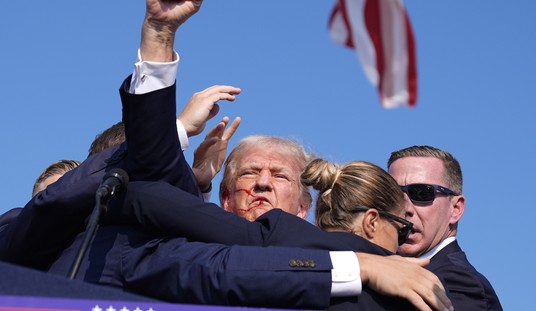What do Tamerlan Tsarnaev, the Boston Bomber; Michael Adebolajo, the Woolwich beheader and Alexandre D. the Parisian neck-stabber have in common? They were all known to the security authorities.
We learn that “despite receiving multiple warnings from Russia about Tamerlan Tsarnaev and adding him to a watch list of potential terrorists, the FBI did not pass on any of its intelligence to Boston police”, according to the Telegraph. The BBC says that “MI5 asked Woolwich murder suspect Michael Adebolajo if he wanted to work for them about six months before the killing, a childhood friend has said.” And now an Italian news service says “Alexandre D., the 22-year-old Muslim extremist arrested for attacking a French soldier in Paris on Saturday, was well known to the French secret service (SDIG), contrary to what was stated by the Interior Ministry and the public prosecutor in Paris, Le Monde reports.”
The Daily Telegraph says that Kenyan authorities were deeply suspicious of Adebolajo, the future Woolwich attacker, and wanted to act against him.
“It is the British themselves who defended him from our law enforcers.”
He added the British diplomatic mission replied in a letter to the police that “gave a clean bill of health that Michael Adebolajo had no criminal record or any connection with any criminal or terrorist organization in the world”.
Kenyan anti-terrorism police detained Adebolajo and six others when they tried to travel north to Somalia in a speedboat.
They were suspected of attempting to go to train with the al Qaeda-linked Islamist militant group al Shabaab in Somalia, and appeared in court in Mombasa.
Adebolajo was returned to Britain and the other six, all Kenyans, were also released without charge.
It’s possible that they were or were being recruited as informants, which always creates dilemmas. “The strongest arguments for informant use are connected to the nature of criminal organizations: informants permit the government to get information about, infiltrate, and destabilize group criminal activity. The most famously effective such deployment was the FBI’s use of informants to go after the mafia, a success story that is often invoked in support of informant use more generally. Of course even that success story had its costs”.
The biggest cost to using informants is that they can in the meantime continue their life of crime. In fact, they are often expected to proceed as before in order to rise ever higher in the hierarchy of the target. The crimes they may naturally commit along the way often go unpunished. The price of catching the big fish is feeding it bait.
And in an unavoidable sense the public is always the bait. The hope is that by giving a little the law enforcers get back much more. Thompson-Reuters describes how some criminals effectively obtain a “get out of jail” card by being informers.
A financial snitch has gotten off too lightly. David Slaine, a former Galleon Group employee, pleaded guilty to insider trading and conspiracy but became an informant to help nab others, including the hedge fund and trading scandal kingpin, Raj Rajaratnam. At the urging of prosecutors, a federal judge has rewarded Slaine with probation and community service instead of up to 25 years in prison. …
But his deal is exactly the kind that can lead to problems. The justice system probably can’t crack big cases without the cooperation of unsavory characters, and giving Slaine favorable treatment is justified up to a point. But even for the best information, letting confessed felons like him essentially off the hook is too high a price to pay.
Though no one is officially admitting it there’s a chance that the the FBI, MI5 and French services were more than passingly familiar with these 3 Islamist attackers. But laugh is on the public; if ever these men were being groomed by law enforcement then they were either doubled, slipped the leash or just went loco. “A double agent, commonly abbreviated referral of double secret agent, is a counterintelligence term used to designate an employee of a secret service or organization, whose primary aim is to spy on a different target organization, but who in fact is a member of that same target organization themselves.”
The author John LeCarre believed that the men who ran informants were in their way a species of confessor. It was certainly a kind of applied psychiatry. Their handlers traded in betrayal. What they offered in exchange was often money, immunity but as LeCarre noted, what they provided was ultimately a kind of salvation. In his famous book Tinker, Tailor, Soldier, Spy LeCarre described trying to see inside a fictional but thinly-disguised version of Kim Philby:
The more he puzzled over Haydon’s rambling account of himself, the more conscious he was of the contradictions. He tried at first to see Haydon in the romantic newspaper terms of a Thirties intellectual, for whom Moscow was the natural Mecca. ‘Moscow was Bill’s discipline,’ he told himself. ‘He needed the symmetry of an historical and economic solution.’ This struck him as too sparse, so he added more of the man whom he was trying to like: ‘Bill was a romantic and a snob. He wanted to join an elitist vanguard and lead the masses out of the darkness.’ Then he remembered the half-finished canvases in the girl’s drawing room in Kentish Town: cramped, overworked and condemned. He remembered also the ghost of Bill’s authoritarian father – Ann had called him simply the Monster – and he imagined Bill’s Marxism making up for his inadequacy as an artist, and for his loveless childhood. Later of course it hardly mattered if the doctrine wore thin. Bill was set on the road and Karla would know how to keep him there. Treason is very much a matter of habit, Smiley decided, seeing Bill again stretched out on the floor in Bywater Street, while Ann played him music on the gramophone.
Bill had loved it, too. Smiley didn’t doubt that for a moment. Standing at the middle of a secret stage, playing world against world, hero and playwright in one: oh, Bill had loved that all right.
Smiley shrugged it all aside, distrustful as ever of the standard shapes of human motive, and settled instead for a picture of one of those wooden Russian dolls that open up, revealing one person inside the other, and another inside him. Of all men living, only Karla had seen the last little doll inside Bill Haydon. When was Bill recruited, and how? Was his right-wing stand at Oxford a pose, or was it paradoxically the state of sin from which Karla summoned him to grace?
In some way that post mortems are probably trying to figure out, it was the “hate preachers”, not the Western security services, who saw the “last little doll”, who claimed the final allegiance inside Tamerlan Tsarnaev, Michael Adebolajo, and Alexandre D. In the choices of the three we see what happens when Karla wins and Smiley loses. The rest of the story we may guess, but in the nature of things, that’s all we will ever be left with. A guess and a tally of our losses.
We often think of necessary evil as the adjunct of war. One of the great PR attractions of using the justice system to fight radical Islamism is that ‘justice’ is clean, lawful and unstained by tradeoffs of war. But it turns out that there’s no free lunch. The moral dilemmas will not leave us. The best we can do is forget they exist.
The Three Conjectures at Amazon Kindle for $1.99
Storming the Castle at Amazon Kindle for $3.99










Join the conversation as a VIP Member